-
 bitcoin
bitcoin $122025.899241 USD
-2.12% -
 ethereum
ethereum $4488.068729 USD
-4.11% -
 bnb
bnb $1315.348019 USD
8.65% -
 tether
tether $1.000457 USD
0.03% -
 xrp
xrp $2.875326 USD
-3.69% -
 solana
solana $222.043604 USD
-4.07% -
 usd-coin
usd-coin $0.999682 USD
0.00% -
 dogecoin
dogecoin $0.249887 USD
-5.62% -
 tron
tron $0.337379 USD
-2.59% -
 cardano
cardano $0.827763 USD
-5.06% -
 hyperliquid
hyperliquid $45.774531 USD
-2.43% -
 chainlink
chainlink $22.079309 USD
-5.87% -
 ethena-usde
ethena-usde $1.000156 USD
0.02% -
 sui
sui $3.482566 USD
-3.57% -
 stellar
stellar $0.386982 USD
-4.92%
How to unstake crypto on Trust Wallet?
Unstaking in Trust Wallet involves withdrawing staked crypto, with possible cooldown periods and gas fees depending on the blockchain.
Jul 04, 2025 at 05:56 am
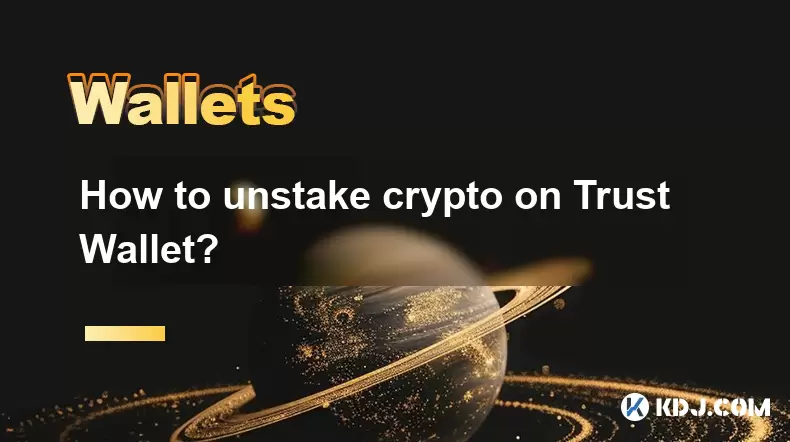
Understanding the Basics of Staking and Unstaking in Trust Wallet
Before diving into the steps to unstake crypto on Trust Wallet, it's essential to understand what staking entails. Staking involves locking up a certain amount of cryptocurrency to support the operations of a blockchain network, particularly those using Proof-of-Stake (PoS) consensus mechanisms. In return, users earn rewards, often in the form of additional tokens.
Unstaking, on the other hand, is the process of withdrawing your previously staked tokens from the network or platform. This may be necessary if you want to access your funds for trading, transferring, or moving them to another wallet or exchange. It’s important to note that some networks impose a waiting period before staked assets become liquid again.
Trust Wallet supports several PoS-based cryptocurrencies such as BNB (Binance Coin), Cosmos (ATOM), and Ethereum 2.0 (ETH) among others. Each of these has its own set of rules and timelines for unstaking, which must be considered before proceeding.
Navigating to the Staking Section in Trust Wallet
To begin the unstaking process, open the Trust Wallet application on your mobile device. Ensure that you are logged into your wallet and have selected the correct account if you manage multiple wallets within the app.
- Go to the 'Wallet' tab at the bottom of the screen
- Scroll down until you find the 'Staking' section
- Tap on the cryptocurrency you’ve previously staked
Once inside the staking interface, you’ll see details like the amount staked, annual percentage yield (APY), and any pending rewards. These metrics help you assess whether it's financially beneficial to proceed with unstaking immediately or wait for more reward accumulation.
Initiating the Unstaking Process
After selecting the staked asset, you'll typically see options to either 'Manage' or 'Unstake' depending on how the interface is structured for that particular token. Some assets may require you to first claim any accrued rewards before initiating an unstake.
- Tap on the 'Unstake' button
- Enter the amount you wish to unstake — this can be the full amount or a partial withdrawal
- Confirm the transaction by tapping 'Confirm' or 'Continue'
At this point, you may be prompted to sign the transaction using your wallet’s security method — usually a biometric scan or passcode. The network will then process the request, which may take anywhere from a few seconds to several days, depending on the protocol.
It’s crucial to remember that some blockchains implement a cooldown period before the funds become available for transfer. During this time, you won’t be able to move or trade the unstaked tokens.
Reviewing Transaction Details and Fees
Before finalizing the unstaking action, always review the transaction details carefully. Look for:
- The exact amount being unstaked
- The estimated time for the funds to become liquid
- Any associated fees or gas costs
Gas fees are paid in the native currency of the blockchain you're interacting with — for example, BNB for Binance Smart Chain or ETH for Ethereum. If your wallet doesn't have enough of the native token, the transaction may fail or get stuck.
If you're unsure about the fee structure, consider checking the network explorer or visiting the official documentation for the specific blockchain you’re unstaking from. Misjudging gas prices can lead to unnecessary delays or losses.
Monitoring the Unstaking Status
Once the unstaking request is submitted, you can monitor its status directly in the Trust Wallet app. Navigate back to the 'Staking' section and look for updates under the relevant cryptocurrency.
You may also use a blockchain explorer associated with the network (e.g., BscScan for Binance Smart Chain or Etherscan for Ethereum) to track the progress of your unstaking transaction. Simply copy the transaction hash from Trust Wallet and paste it into the search bar of the explorer.
During the cooldown or unbonding period, the tokens remain in a transitional state — they are no longer generating rewards but aren’t fully tradable yet. Once this period ends, the tokens will appear as available balance in your wallet and can be freely transferred or sold.
Frequently Asked Questions
Q: Can I unstake only a portion of my staked tokens?Yes, Trust Wallet allows partial unstaking for most supported cryptocurrencies. When initiating the unstake, simply enter the desired amount instead of choosing the full staked balance.
Q: Why does it take time for unstaked tokens to become available?Many PoS blockchains enforce a cooldown or unbonding period to ensure network stability and prevent rapid validator changes. This period varies by blockchain and is not controlled by Trust Wallet.
Q: What happens to my staking rewards when I unstake?Your accumulated rewards are typically not affected by unstaking unless the protocol specifies otherwise. However, you may need to manually claim rewards before or after the unstake process, depending on the token.
Q: Do I need to pay a fee to unstake on Trust Wallet?Unstaking itself doesn't incur a direct fee from Trust Wallet, but you must pay network gas fees in the native token of the blockchain you're interacting with.
Disclaimer:info@kdj.com
The information provided is not trading advice. kdj.com does not assume any responsibility for any investments made based on the information provided in this article. Cryptocurrencies are highly volatile and it is highly recommended that you invest with caution after thorough research!
If you believe that the content used on this website infringes your copyright, please contact us immediately (info@kdj.com) and we will delete it promptly.
- BlockDAG, DOGE, HYPE Sponsorship: Crypto Trends Shaping 2025
- 2025-10-01 00:25:13
- Deutsche Börse and Circle: A StableCoin Adoption Powerhouse in Europe
- 2025-10-01 00:25:13
- BlockDAG's Presale Buzz: Is It the Crypto to Watch in October 2025?
- 2025-10-01 00:30:13
- Bitcoin, Crypto, and IQ: When Genius Meets Digital Gold?
- 2025-10-01 00:30:13
- Stablecoins, American Innovation, and Wallet Tokens: The Next Frontier
- 2025-10-01 00:35:12
- NBU, Coins, and Crypto in Ukraine: A New Yorker's Take
- 2025-10-01 00:45:14
Related knowledge
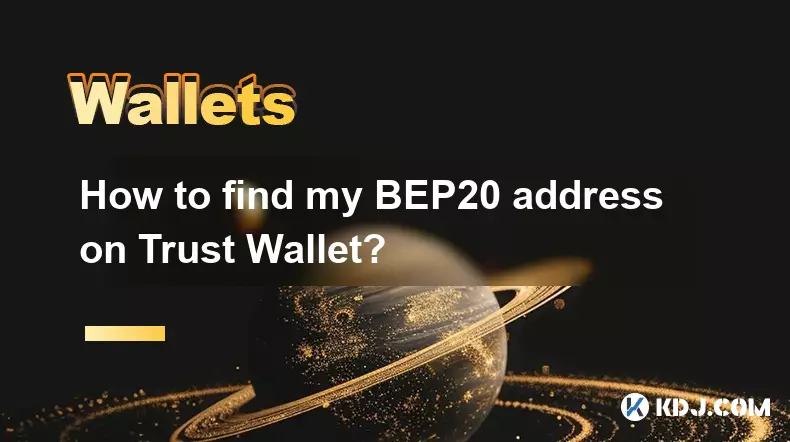
How to find my BEP20 address on Trust Wallet?
Oct 04,2025 at 06:19pm
Understanding BEP20 and Trust Wallet Compatibility1. Trust Wallet is a widely used cryptocurrency wallet that supports multiple blockchain networks, i...
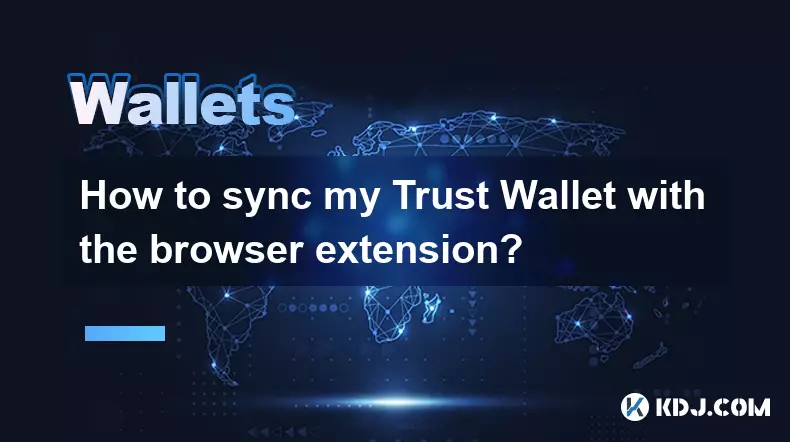
How to sync my Trust Wallet with the browser extension?
Oct 03,2025 at 06:19pm
Understanding Trust Wallet and Browser Extension IntegrationTrust Wallet is a popular non-custodial cryptocurrency wallet that supports a wide range o...
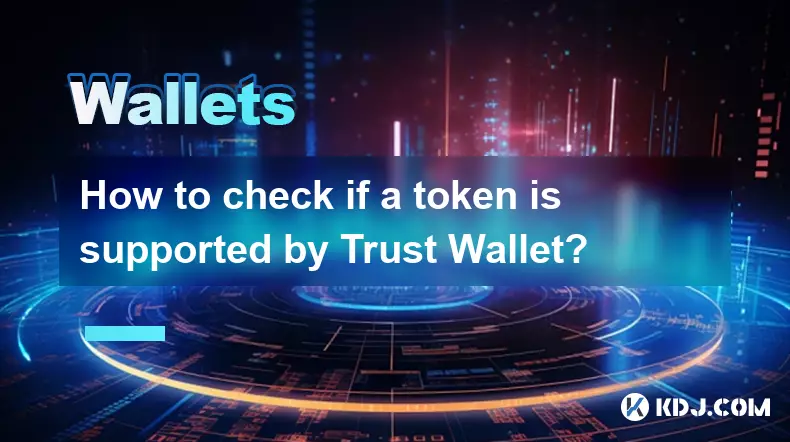
How to check if a token is supported by Trust Wallet?
Oct 04,2025 at 05:18am
Understanding Token Compatibility with Trust Wallet1. Trust Wallet supports a wide range of blockchain networks, including Ethereum, Binance Smart Cha...

How to get the Trust Wallet browser extension?
Oct 01,2025 at 12:37am
How to Access the Trust Wallet Browser Extension1. Visit the official Trust Wallet website through a secure internet connection. Navigate to the downl...
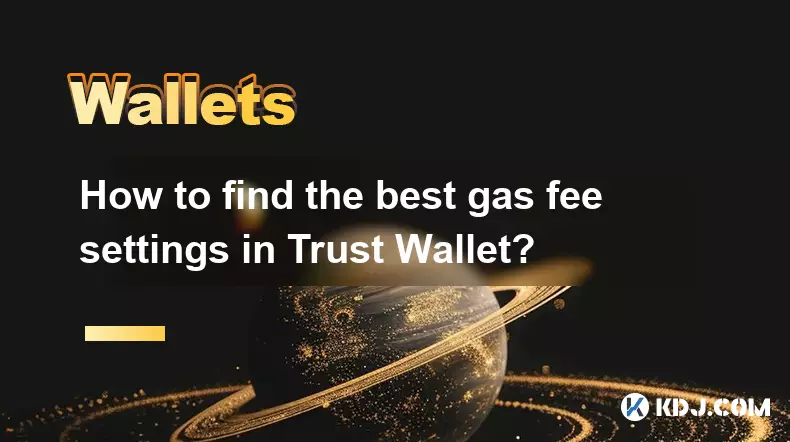
How to find the best gas fee settings in Trust Wallet?
Oct 08,2025 at 02:19am
Understanding Gas Fees in Trust Wallet1. Gas fees are transaction costs paid to miners or validators on blockchain networks like Ethereum and Binance ...

How to interact with a DApp using Trust Wallet?
Oct 02,2025 at 10:00pm
Connecting Trust Wallet to a DApp1. Open the Trust Wallet app on your mobile device and ensure your wallet is unlocked with access to your assets. Nav...

How to find my BEP20 address on Trust Wallet?
Oct 04,2025 at 06:19pm
Understanding BEP20 and Trust Wallet Compatibility1. Trust Wallet is a widely used cryptocurrency wallet that supports multiple blockchain networks, i...

How to sync my Trust Wallet with the browser extension?
Oct 03,2025 at 06:19pm
Understanding Trust Wallet and Browser Extension IntegrationTrust Wallet is a popular non-custodial cryptocurrency wallet that supports a wide range o...

How to check if a token is supported by Trust Wallet?
Oct 04,2025 at 05:18am
Understanding Token Compatibility with Trust Wallet1. Trust Wallet supports a wide range of blockchain networks, including Ethereum, Binance Smart Cha...

How to get the Trust Wallet browser extension?
Oct 01,2025 at 12:37am
How to Access the Trust Wallet Browser Extension1. Visit the official Trust Wallet website through a secure internet connection. Navigate to the downl...

How to find the best gas fee settings in Trust Wallet?
Oct 08,2025 at 02:19am
Understanding Gas Fees in Trust Wallet1. Gas fees are transaction costs paid to miners or validators on blockchain networks like Ethereum and Binance ...

How to interact with a DApp using Trust Wallet?
Oct 02,2025 at 10:00pm
Connecting Trust Wallet to a DApp1. Open the Trust Wallet app on your mobile device and ensure your wallet is unlocked with access to your assets. Nav...
See all articles










































































